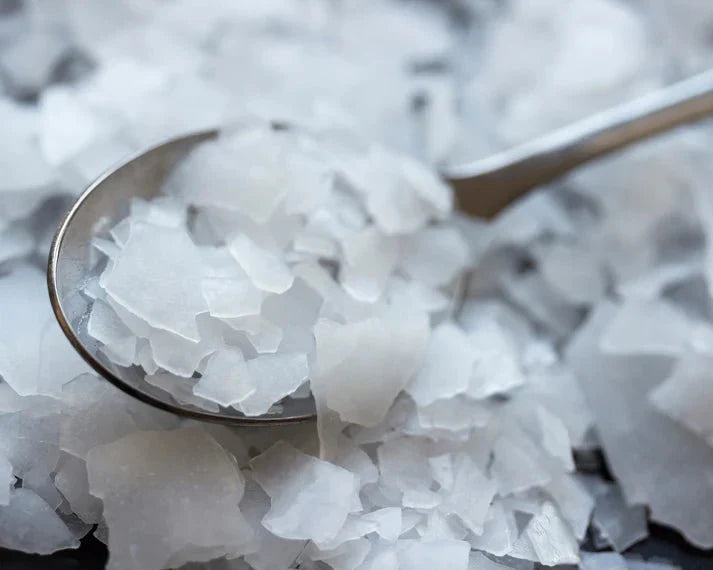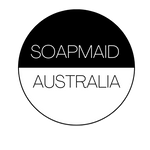
Tips on Mixing Potassium Hydroxide Cleaner and Water Safely for Soap Making
Potassium hydroxide is a crucial ingredient in the soap-making process, offering unique properties that help create high-quality soaps. As a strong alkali, potassium hydroxide cleaner effectively breaks down fats and oils, making it indispensable for soap makers.
However, it’s essential to understand what is potassium hydroxide and the necessary precautions for safe handling. While many might wonder, "Is potassium hydroxide safe?" the answer lies in following strict safety guidelines.
What is Potassium Hydroxide?
So what is potassium hydroxide, really? Potassium hydroxide also known as caustic potash, is a highly alkaline compound commonly used in various industries. It plays a vital role in the production of soft and liquid soaps due to its ability to saponify fats and oils effectively.
Available in white, odourless flakes, potassium hydroxide cleaner is highly corrosive and requires careful handling.
The Importance of Safety in Soap Making
Potassium hydroxide cleaner is a potent chemical that can cause severe burns and injuries if mishandled. Ensuring a safe environment and following proper procedures can prevent accidents and injuries.
Preparing for the Mixing Process
- Gathering Materials:
- Potassium hydroxide cleaner
- Distilled water
- Personal protective equipment (PPE) such as gloves, goggles, and long-sleeved clothing
- A well-ventilated workspace
- Setting Up the Workspace:
- Ensure the workspace is free from distractions and clutter.
- Use non-reactive containers, such as stainless steel or heat-resistant plastic, for mixing.
- Have a dedicated mixing area to avoid contamination.
Step-by-Step Guide to Mixing Potassium Hydroxide Cleaner and Water
- Measuring Ingredients:
- Accurately measure the required amount of potassium hydroxide cleaner. Precision is key to achieving the desired soap quality.
- Measure the appropriate amount of distilled water separately.
- Adding Potassium Hydroxide to Water:
- Slowly add the potassium hydroxide cleaner to the distilled water, never the other way around. This prevents a violent reaction that could cause splashing and injury.
- Stir the mixture gently but continuously to ensure the potassium hydroxide dissolves completely.
- Handling Heat:
- The mixture will generate heat as the potassium hydroxide dissolves. Allow it to cool in a safe place before using it in your soap-making process.
- Ensure the container is heat-resistant to prevent cracking or breaking.
Is Potassium Hydroxide Safe?
When handled correctly, potassium hydroxide is safe for use in soap making. It is essential to follow safety guidelines and use appropriate protective gear to mitigate risks. Many soap makers use potassium hydroxide cleaner without issues, provided they adhere to safety protocols.
Safety Precautions to Follow
- Personal Protective Equipment (PPE):
- Always wear gloves, goggles, and protective clothing to shield your skin and eyes from splashes.
- Ensure your workspace is well-ventilated to avoid inhaling fumes.
- Storage and Handling:
- Store potassium hydroxide cleaner in a cool, dry place, away from children and pets.
- Use clearly labeled containers to prevent accidental misuse.
- Emergency Procedures:
- Keep a first aid kit and emergency contact information readily available.
- In case of skin contact, rinse immediately with plenty of water and seek medical advice if necessary.
Benefits of Using Potassium Hydroxide in Soap Making
Potassium hydroxide offers several benefits in the soap-making process:
- Effective Saponification:
- Potassium hydroxide cleaner is highly effective in saponifying fats and oils, resulting in a smooth, high-quality soap.
- Versatility:
- It allows for the creation of a variety of soaps, including liquid and cream soaps, expanding your soap-making possibilities.
- Consistency:
- Soaps made with potassium hydroxide maintain their consistency and quality over time, ensuring long-lasting products.
Common Misconceptions About Potassium Hydroxide
There are several misconceptions about the use of potassium hydroxide in soap making:
- Misconception: Potassium hydroxide is too dangerous for home use.
- Fact: With proper safety measures, potassium hydroxide can be safely used in home soap-making projects.
- Misconception: Soaps made with potassium hydroxide are harsh on the skin.
- Fact: When formulated correctly, soaps made with potassium hydroxide are gentle and beneficial for the skin.
Understanding what potassium hydroxide is and how to use it safely is paramount for any soap maker. By carefully following safety protocols and using personal protective equipment, you can confidently answer the question, "Is potassium hydroxide safe?" and enjoy the benefits it brings to your soap-making projects.
Potassium hydroxide cleaner is a powerful and effective tool in the creation of high-quality soaps, offering versatility and consistency.
For more information on potassium hydroxide and other soap-making materials, visit Soapmaid. Our website offers a wide range of raw materials and resources to support your soap-making journey.
Ready to start your soap-making journey? Visit Soapmaid to explore our range of high-quality potassium hydroxide and other essential materials. Start creating beautiful, high-quality soaps today!
